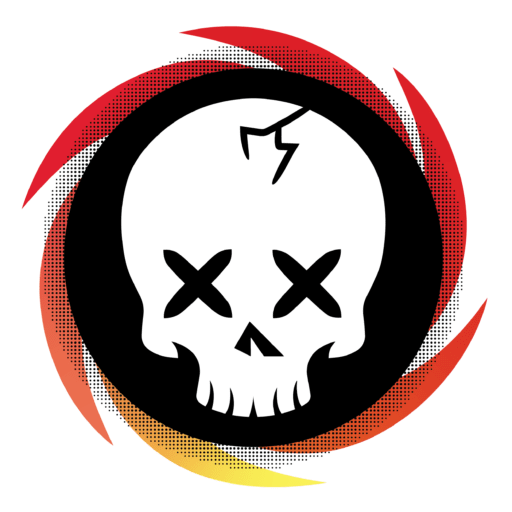Rejoice, for now we can truly enter The Old World
-Review by GM Brad
“Okay, there’s a funny side to the story, and a less funny side.” – Cox Flummery, Halfling Scout
Warhammer: The Old World Roleplaying Game Gamemaster’s Guide
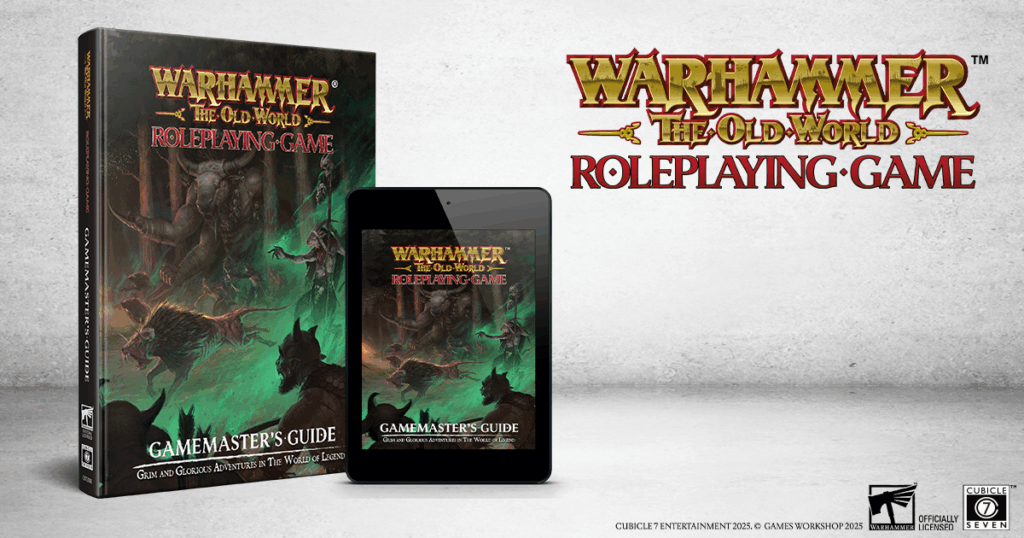
On June 19th, Cubicle 7 teased us through the release of the Warhammer: The Old World Roleplaying Game Player’s Guide, which I reviewed here. What followed was, to be expected, a month of anxiously waiting to get our hands on the Gamemaster’s Guide (GM’s Guide). While we were lucky enough to be granted a review copy to share our thoughts, the community at large is still anxiously gnashing their fangs to get their own look into it (sorry, Rat Catcher’s Guild members- just a bit longer!) If you want to join the waiting masses, you can pre-order your copy from Cubicle 7 here.
If you’ve read any of my reviews, it’s no secret that I love (almost all things) Warhammer. The risk, the intrigue, the small shining lights of the heroes against the never ending threats – these are the tales that made up my youth. With the release of The Old World Roleplaying Game, we get a chance to visit the World that Was before even the Great War Against Chaos that starts with the invasion of Kislev by Asavar Kul in 2301.
"Why Two Books when One Book Do?" - Grurg, the illiterate Ogre
While there has been some concern around the breaking apart of The Old World Roleplaying Game into two books, the Player’s and GM’s Guides, I personally appreciate the decision. It’s in line with other systems (Dungeons and Dragons, Pathfinder, Forbidden Lands) and even the most recent Imperium Maledictum publications from Cubicle 7 (Inquisition guides). While there is some cost change for a GM needing to purchase two books instead of one, the Player’s Guide having all relevant information a player needs made their learning the rules quick and easy, and I saw less flipping back and forth through a book like we did when we first dove into WFRP 4e.
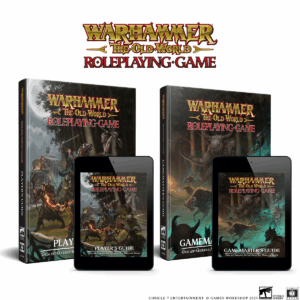
In addition to player ease, within the Gamemaster’s Guide there are multiple items that players either don’t need access to, or you may not want them to have access to. The Gamemaster’s Guide further expands on the Grim Portents that are merely hinted at in the Player’s Guide, adds information on Dark Threads, Contacts, Magic items, and 100 pages of “Allies and Antagonists” for use in your game. Corruption, too, is only detailed in the GM’s guide, but we will get to that in a bit.
It's not what you know, but who you know
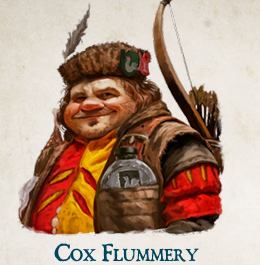
Memorable NPCs can help to “make” a game for your players, rooting them to the world and creating an anchor for them. While GMs can often need a throwaway NPC for a quick street interaction, other NPCs have ties to the story at large, and others still can make a core memory that lasts many characters lifetimes. If you’ve ever watched our actual plays and wondered who is “Abernathy the Innkeeper” when he is occasionally referenced, suffice to say he hasn’t been in a game for our group in over 5 years…
The Gamemaster’s Guide includes the details for the 20 different contacts first introduced in the Player’s Guide under their “Subsets” – The Great and the Good, Comrades in Arms, The Common Folk, and Wanderers and Wastrels.
The expanded information within the Gamemaster’s Guide gives GMs some tips for using contacts, roleplaying them, and developing new contacts for your party. The contacts themselves include a brief description, where you could logically meet them, what favors they accept or give, their needs, and their own interactions and relationships amongst other NPCs and groups. Each contact also has a primary skill, representing something that they are best at. Players contacts can help with downtime endeavors that are based around their primary skill, adding +1d (and only +1d, no matter how many contacts share said skill) to endeavor rolls undertaken by that player. Advancement is always a question for players, and with this system rewarding skill upgrades through downtime failures, seeing a way for a contact to help players with those advancements through that extra die will help create better ties to the NPCs and setting.
The ties that bind us...or tear us apart
Within the Player’s Guide Character Creation section, we had our first hint towards the “Grim Portent”, a sort of “Session Zero” that would tie you to the game and your party. The vague information there left me hoping we would get some expansion on this event within the GM’s guide, and we do. The Grim Portent is meant to be a singular, starting event; it is a way to hook the players into the machinations and themes of your overall campaign adventure, with subsequent adventures following through the Dark Threads.
The GM’s guide includes three sample Grim Portents for use (I personally love “From the Ashes”). Each has an overview of the portent, followed by notes for the players investigations as well as sample Grim Reminders which are motifs and themes that subtly or overtly touch back on the threat the party faces. When a single moment is meant to “define” the party and adventure, three samples feels inadequate, and so more crucial than these examples are the support for how to create your own Grim Portent. Within the GM’s guide are a few pages that focus on creating your own grim portent through the three essential elements.
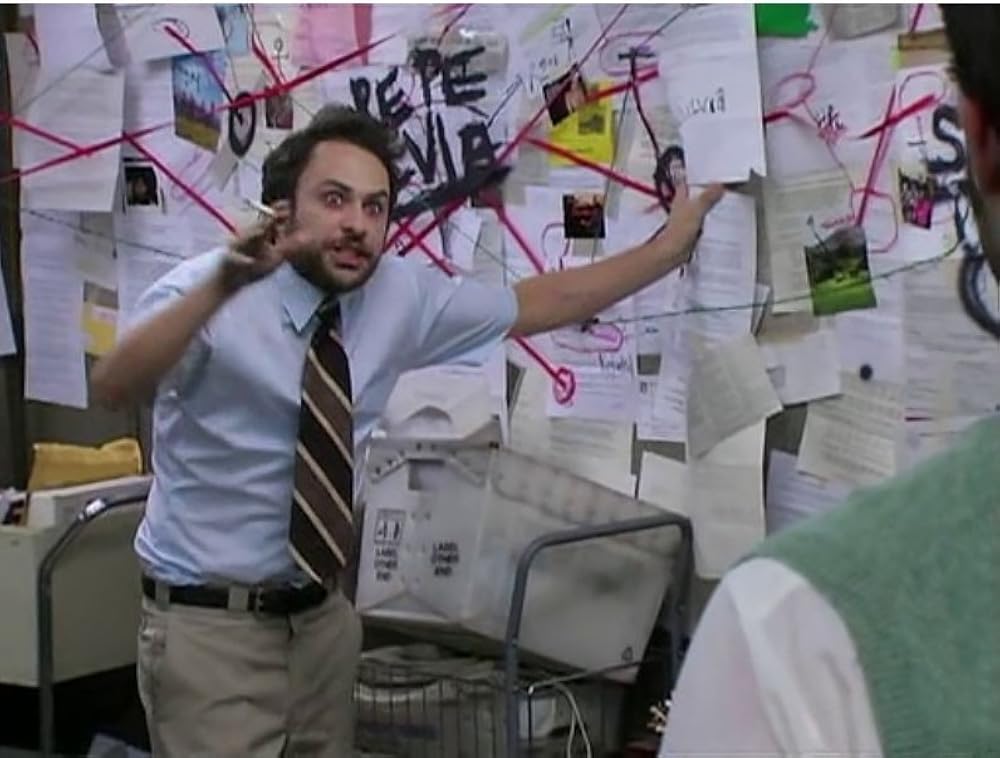
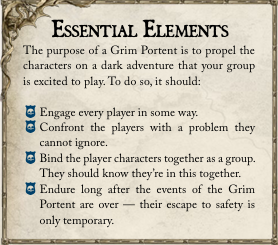
While the Grim Portents feel a bit like a codified Session Zero, a way to give an overview to your players without just sending a pregame synopsis, they are enhanced by the connections between the Dark Threads. Dark Threads are the connections that link the schemes of the factions and NPCs together, a way to keep “…the world feeling interconnected and alive.” They remind me of the Pepe Silvia meme from “It’s Always Sunny in Philadelphia”, or a scene from any crime drama where the protagonist is staring at a white board covered in pictures, scribbles, and connecting lines attempting to solve the case. These Dark Threads, more so than just the portent, are where the adventure continues and thrives.
Within the Dark Threads are anchor points, called “Knots”; these are key factions, sub-factions, and NPCs that tie the many machinations, plots, and sub-plots together. With the base setting of the game being assumed to be Talagaad, the GM’s guide has a two page spread showing off numerous knots and the Dark Threads that tie them within the city. This chart isn’t just beautiful, it should be very helpful for GM’s who set their games within the city. But what if your game isn’t set in Talagaad, or you have created new NPCs crucial to your story? Simply add them into the existing web (or create your own), and add a few additional Dark Threads to tie them to other Knots in the web.
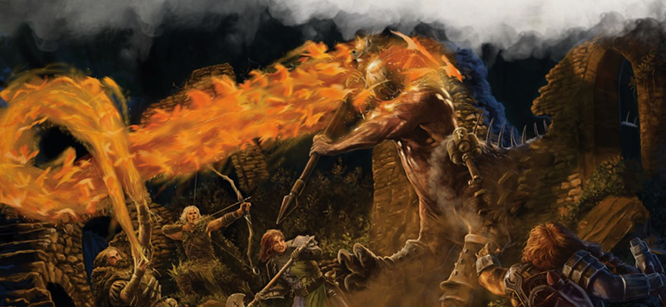
Chaos reigns in everything
It wouldn’t be Warhammer without the ever pervasive risk of Chaos, now would it? When the Player’s Guide came out in June, there were few references and rules to the impact of Chaos on your character, with the largest being the talent “Resistance to Corruption”. The rules that impact players on corruption are all within the Gamemaster’s Guide. When I first saw this note in the Player’s Guide, I was very curious to see why that decision had been made and after reading the GM’s guide I like what I’ve read, but want to see it in action before fully weighing in. My biggest takeaway for The Old World Roleplaying Game and Chaos corruption is that it is more fluid, more narrative, and less “structured” than it was in both WFRP and Imperium Maledictum. There are no corruption points to be gathered with a risk waiting at the end, it begins immediately.
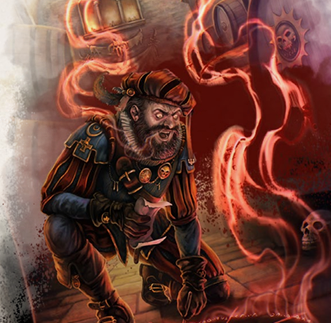
While WFRP and Imperium both stack points that lead to eventual creeping corruption, leaving the player to sweat each “exposure event”, TOW focuses on every event possibly being the breaking event. Once exposed, a player must test against the exposure, and with even a single failure they become Vulnerable. This is where The Old World Roleplaying Game could shine, because it allows for excellent GM to Player interactions. When Vulnerable, the GM can tempt the player one time with a boon if they indulge in a darker aspect of their character. If they reject this offer, they lose the Vulnerable state but if they accept they become Tempted. Once Tempted, the path to total corruption includes three steps – Tarnished, Tainted, and Damned, with each growing in exponential severity. A Tempted character remains forever at risk of total corruption, unless a pivotal narrative moment allows them to stumble back from the precipice of damnation. Once a character fully falls to the Damned tier of Tempted, they are allowed to be played for one final session which ends in their conversion to an NPC that is a twisted remnant of who they once were. Within the Gamemaster’s Guide there are four sample Temptation paths, one for each of the Chaos Gods, but GMs are encouraged to create their own as well.
Here come the "bad guys"
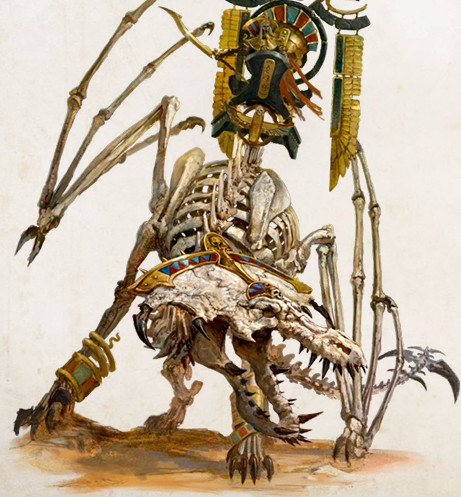
I have said in a few different community forums that The Old World Roleplaying Game could easily lean to a more heroic or combat heavy game in comparison to WFRP. That’s not to say that this game is ONLY for combat, but it has taken a tremendous step forward with the NPC stat blocks by including all relevant information in the box of text, similar to what I saw with Dungeons & Dragons or Pathfinder. I will note that I have seen it said this is very reminiscent of Soulbound, but I would not know that personally as I have never played it.
Taking up over half of the Gamemaster’s Guide length, the final section, “Allies and Antagonists” is 96 pages of background on NPC types, encounter suggestions, Faction descriptions (and motivations) and NPC information and profiles.
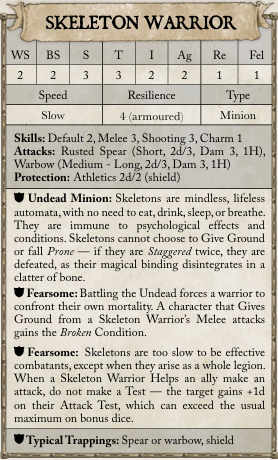
With 77 NPC profiles across8+ factions (eight named, but more encompassed within), there are a wealth of options for antagonists in your game. The guide includes profiles for common “enemies”, such as: Greenskins (The Red Eyez Tribe), Beastmen (The Slaughtered Stag Warherd), and Undead, with a heavy focus on Tomb Kings (Dominion of Dusk) faction enemies such as the Lahmian Vampire and Necrolith Bone Dragon. We also have NPC Profiles for Dwarfs, Wood Elves, High Elves, Bretonnians, Magic Users, and the three main Empire Factions: Talabec, Osterlund, and Reikland.
With all of these NPC profiles, my GM brain is already chewing on a slightly more heroic adventure. While I don’t intend to go full Gotrek and Felix, I was very excited to see some of the items from the tabletop wargame in the Magic Items section. Those who have played Warhammer: The Old World tabletop will recognize some iconic items like the “Duellist Blades”, the “Headman’s Axe”, the “Armour of Meteoric Iron”, and the “Luckstone”.
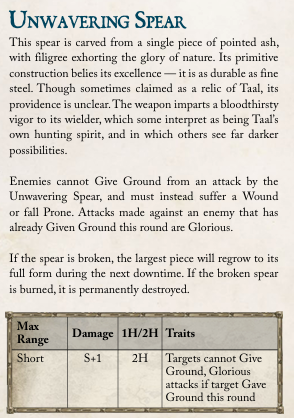
However, if you want to keep it more low-fantasy, in line with what most WFRP play is like, that is absolutely possible as well. Games of intrigue, mystery, and investigation are just as feasible as a slightly more heroic Warhammer game with the rules of Warhammer: The Old World Roleplaying Game. It will all depend on what you and your group make of it.
The Dead Suns Verdict - 4.25/5 Skulls

Warhammer: The Old World Roleplaying Game is a system that I am excited to dive into. The Gamemaster’s Guide is fantastic, including everything I hoped it would, and having a far larger NPC pool than expected. The only thing that could have raised the score to my Nurgle loving self would have been more information on illness and disease, though with the streamlined system those should be easy enough for a GM to assign an appropriate condition for.
Pick up your copy of The Old World Roleplaying Game – Gamemaster’s Guide from Cubicle 7 here.
Thank you to Cubicle 7 for allowing us access to a review copy. Product provided by Cubicle 7 to Dead Suns Company for review. No additional compensation provided to Dead Suns Company for this review.
